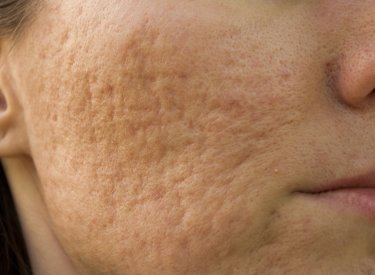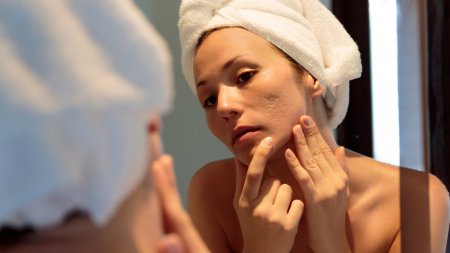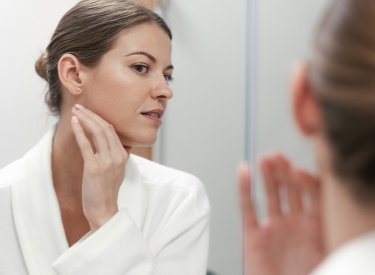Solutions & traitements
How to get rid of acne marks and scars?
Acne lesions can leave marks and sometimes scars. Find out how to reduce them.

Solutions & traitements
Acne lesions can leave marks and sometimes scars. Find out how to reduce them.
Before we look at how acne marks and scars form and what we can do to get rid of them, let's quickly recap what acne is and why it appears.
Acne marks can disappear naturally, although this may take several months. Acne scars, on the other hand, are permanent skin lesions and will not disappear without treatment.
The skin around a pimple can change color, even when the lesion is no longer inflamed. Changing from red, purple to brown, marks can gradually fade on their own, but this can take time.
Simple gestures can help reduce the appearance of acne marks:
Scars form when an acne lesion penetrates deep into the skin and damages the tissues. Acne scars can take different forms and require different types of treatment.
More common on the face, “atrophic” or “depressed” scars are located beneath the surrounding skin. They form when the body doesn't produce enough collagen during the healing process. There are three types.
These large scars are U-shaped. The shallower they are, the better they can be treated.

These are narrow, V-shaped scars that sometimes appear as small round or oval holes, much like a chickenpox scar. They are difficult to treat because they often run deep.

These large scars usually have rounded edges and an irregular appearance.

Before you start treating acne scars, it's important to keep three things in mind:

Often found in acne products, alpha-hydroxy acids (AHAs) can make acne scars less visible. The acid acts as an exfoliant, removing the outer layer of skin and any discoloration or roughness.

Lactic acid peels performed by dermatologists can improve your skin's texture, appearance and pigmentation, and lighten acne scars. You can also find many lactic acid peels, serums and ointments in pharmacies.

Topical retinoids are another acne treatment that can reduce discoloration and make scars less visible. Don't forget to wear sunscreen, as retinoids make the skin more sensitive to the sun.

Salicylic acid cleanses pores and exfoliates skin.

Dermabrasion is a surgical technique. Health professionals remove the upper layer of the epidermis.

Chemical peels performed at home or by a dermatologist contain a strong acid that removes the top layer of epidermis to reduce deeper scars.

The laser is used by a healthcare professional to remove the top layer of skin. With this technique, the skin generally heals faster than after other treatments.

Products (such as hyaluronic acid, poly-L-lactic acid and body fat) are injected beneath the skin's surface to plump and smooth depressed scars. The effect lasts between 6 and 18 months, but some are permanent.

A technique that involves perforating the skin with an electric pen or roller. As the skin heals, it produces collagen.
